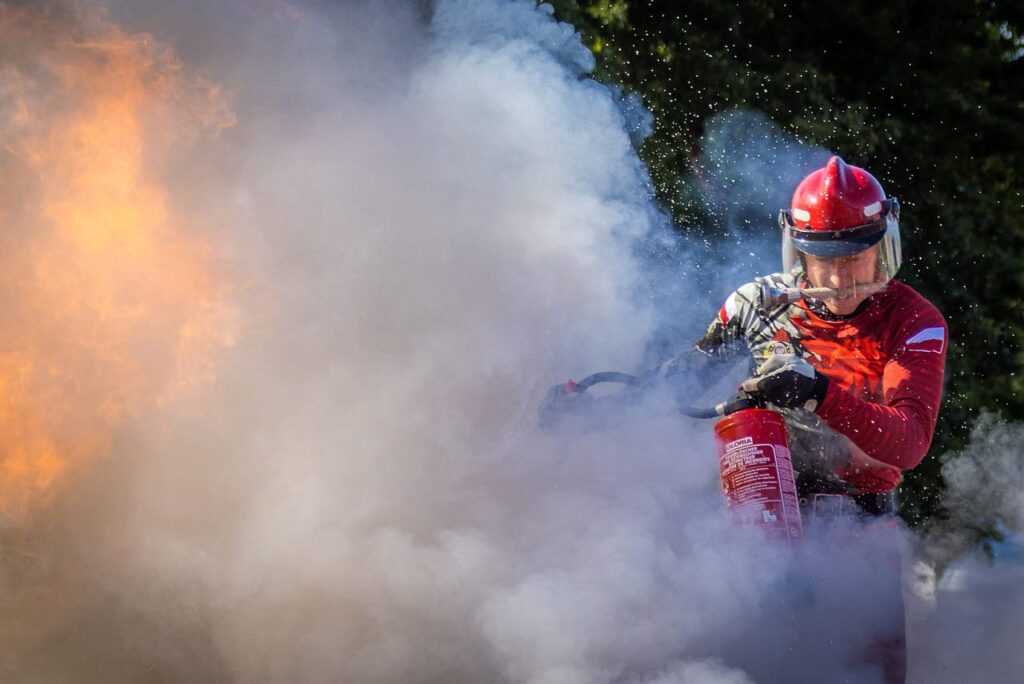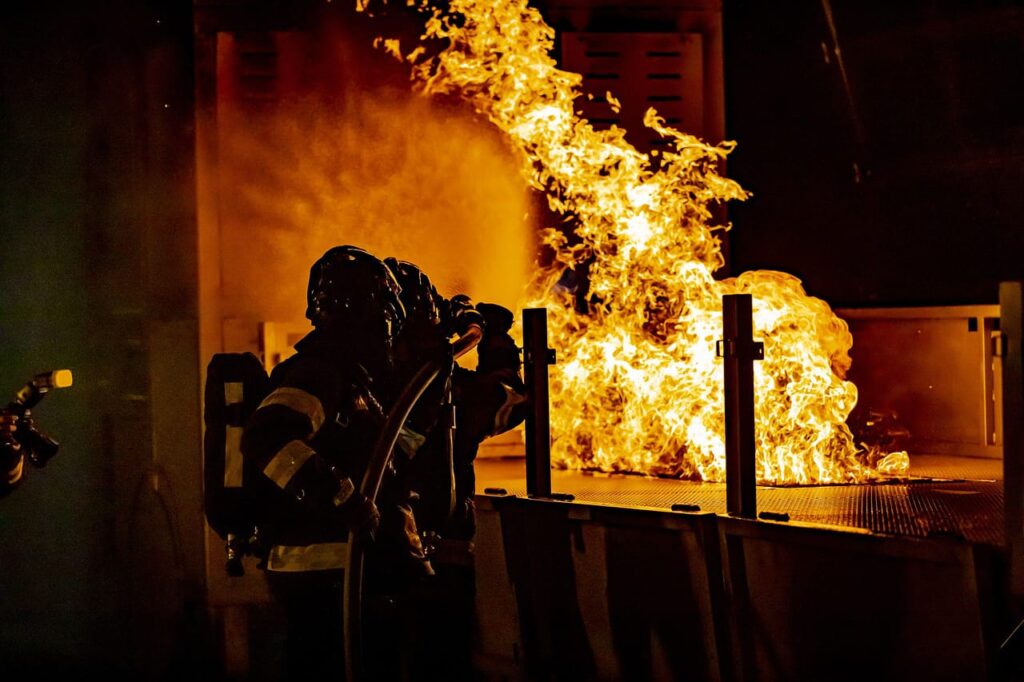In every home and business, fire extinguishers are a necessary safety item. The following guide is designed to help you determine how many, what size, and what type you need. It will also discuss the types of extinguishers, the different classes, and their uses.
According to the types of fires they are designed to put out. Three classes of fires :
- Class A fire: paper, wood, cloth, rubber, and plastic.
- Class B fire: Flammable liquid, gasoline paint thinner, motor oil, grease, and solvent.
- Class C fire: Electrical nature.
All fire extinguishers receive a numeric rating, which indicates the size of the fire a particular unit is capable of fighting.
Example: A 4-A rating means the unit will put out twice as much. Because the C rating means the extinguisher agent in the unit is not electronically conducive, there are no numeric ratings for C-class fires.
Check the dial gauge on the fire extinguisher monthly.
Fire Extinguisher Classes / Ratings
The following symbols and letters should be visible on the fire extinguisher label. They indicate which fire extinguisher should be used on the larger symbols below, as opposed to the previous style that will be used for all new fire extinguishers.
Class A – Ordinary Combustibles ( Wood, Cloth, Paper, etc)
Paper, Cloth, Wood, or ordinary combustibles fuel class A fire. We encounter most fires are A fires.
A minority of fire extinguishers can extinguish a class A fire, but most can since they are the most common. They can not only be smoother but also drowned to extinguish them. If you need to extinguish a class A fire, look for an extinguisher with the symbol to the left.
Class B – Burning Liquids / Gases ( Gasoline, Oils, Cooking Fats, etc)
Liquid combustibles like Kerosene, gasoline, cooking fats, and oils would be classified as B fires fueled by fire. Either physical or chemical smoothing must occur to extinguish a class B fire. DO NOT throw water on it. It will not extinguish the fire. It often will cause the burning liquid to splash. If you need to extinguish a class B fire, Look for an extinguisher with the symbol to the left.
Class C – Live Electrical Equipment ( Motors, Appliances, Switches, etc.)
If ignited by fire, Live Equipment like computers, appliances, and switches is classified as a Class C fire. It must be smothered. As a conductor of electricity, NEVER use water or other liquid. If you need to extinguish a Class C fire, Look for an extinguisher with the symbol to the left.
Class D – Combustible Metals ( Magnesium, Lithium, etc.)
Metals like magnesium and lithium ( not ordinary, liquid, or electrical) are different enough to receive their classification as fueled by fires.
Class K – Cooking Materials ( Cooking oils/fats/Grease)
It is a newer classification. It is specifically designed to supplement kitchen fire suppression systems for cooking oil, fat, and grease fires. If you must extinguish a class K fire, Look for the letter K symbol.
Multi-Class – Combination of the Classes Above
What if your fire is soaked in rags ( Class A) or gasoline ( Class B)? What if you leave an electric wire ( Class C) igniting magnesium ( Class D)? No Symbol is Available.
Is it necessary to maintain five different extinguishers? Which fire extinguisher should you use? – You Can.
Remember to always check the label before use. Most common extinguishers can handle A, B, and C-class fires.
Fire Extinguisher USE
How to use a fire extinguisher: Here’s an easy acronym for fire extinguisher use.
P A S S – Pull, Aim, Squeeze and Sweep
P – The Pull
Pull the pin at the top of the extinguisher. This prevents the handle from being accidentally pressed.
A – Aim
Stand about 8 feet from the fire. Then, aim the nozzle toward the base of the fire.
S – The Handle
If you release the handle, the discharge will stop. Squeeze the handle to discharge the extinguisher.
S – Side to Side
Then, Sweep the nozzle back and forth.
Commercial occupancies where there is a flammable liquid. Fire extinguishers are necessary safety items.
When using a fire Extinguisher, Use the ” Buddy System ” to have someone back up Whenever possible. If you can not extinguish a fire or doubt your safety, leave immediately and close off the area. ( DO NOT lock them; close the door). Contact a firefighter to relay your information about the fire, and leave the building.
Stay away from the area. Suppose the extinguisher was not adequately maintained or partially discharged. In that case, you can expect, at most, ten full seconds of extinguishing on a typical unit, and there could be significantly less.
After using it, recharge any discharged extinguisher immediately. If you discharge an extinguisher or pull the pin for any reason, call your campus or corporate fire marshal’s office to arrange a replacement.
Do not fight the fire.
All of the following apply:
- Out of the building.
- The building is being evacuated.
- Call Fire Department
- Not Spreading beyond its starting point
- There is no imminent peril.
- You can fight the fire with your back to exit.
- Stay low and avoid smoke.
- The proper extinguisher is immediately at hand
- Know how to use the extinguisher
- You have read the instructions.
Pull the fire alarm and leave the area. If you encounter any of these conditions, do not fight the fire yourself.



